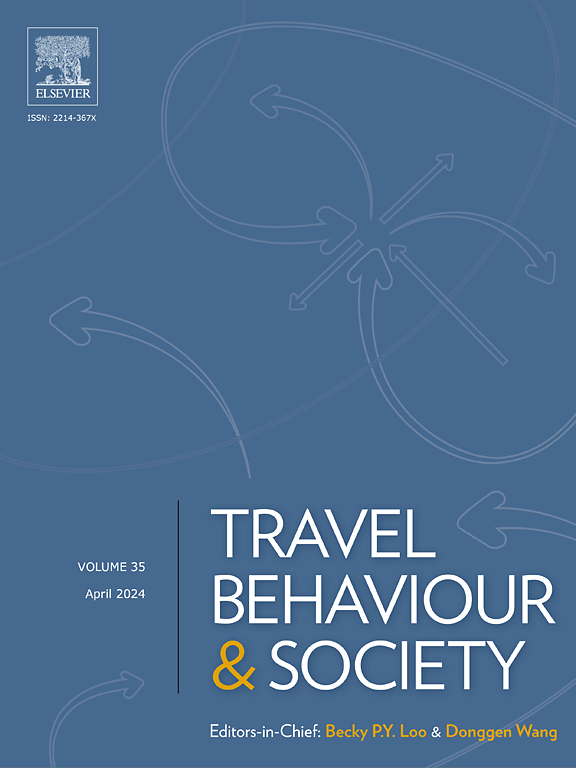Ride-hailing vs. public transport: Comparing travel time perceptions using revealed preference data from Washington DC
IF 5.1
2区 工程技术
Q1 TRANSPORTATION
引用次数: 0
Abstract
Ride-hailing has become an important part of the urban mobility landscape. The main contribution of this study is to estimate how travellers perceive time when using ride-hailing compared to using conventional public transport, to better understand ride-hailing mode choice. We combine two unique datasets containing actual, individual passenger behaviour for the Washington DC area from October 2018: a large set of almost 250,000 individual ride-hailing trips made using Uber, and more than 326,000 public transport trips obtained from automated ticketing data. Contrary to previous studies our model estimations rely on over half a million directly observed passenger choices between ride-hailing and public transport, based on which we estimate a discrete choice model to infer travel time perceptions for both modes using a binomial logit model. Our results show that on average ride-hailing in-vehicle time is perceived 35% less negative than public transport in-vehicle time. We also found that waiting time for ride-hailing is valued 1.3 times more negative than ride-hailing in-vehicle time, which is about 20% less negative than the ratio between waiting and in-vehicle time found for public transport. Our study enables a more accurate modelling of ride-hailing by using mode-specific travel time coefficients derived from large-scale empirical data, which can improve the accuracy of modelling outputs and thus improve decision-making processes.
网约车与公共交通:使用来自华盛顿特区的显示偏好数据比较出行时间观念
网约车已经成为城市交通的重要组成部分。本研究的主要贡献是估计与使用传统公共交通工具相比,乘客在使用网约车时如何感知时间,以更好地理解网约车模式的选择。我们结合了两个独特的数据集,其中包含2018年10月以来华盛顿特区的实际个人乘客行为:使用优步进行的近25万次个人乘车旅行,以及从自动票务数据中获得的超过32.6万次公共交通旅行。与之前的研究相反,我们的模型估计依赖于超过50万直接观察到的乘客在乘车和公共交通之间的选择,在此基础上,我们估计了一个离散选择模型,以使用二项logit模型推断两种模式的旅行时间感知。我们的研究结果表明,平均而言,人们认为网约车的车内时间比公共交通的车内时间少35%。我们还发现,网约车的等待时间比网约车的车内时间负1.3倍,比公共交通的等待时间和车内时间负20%左右。我们的研究通过使用来自大规模经验数据的特定模式的旅行时间系数,可以更准确地建模网约车,这可以提高建模输出的准确性,从而改善决策过程。
本文章由计算机程序翻译,如有差异,请以英文原文为准。
求助全文
约1分钟内获得全文
求助全文
来源期刊

Travel Behaviour and Society
TRANSPORTATION-
CiteScore
9.80
自引率
7.70%
发文量
109
期刊介绍:
Travel Behaviour and Society is an interdisciplinary journal publishing high-quality original papers which report leading edge research in theories, methodologies and applications concerning transportation issues and challenges which involve the social and spatial dimensions. In particular, it provides a discussion forum for major research in travel behaviour, transportation infrastructure, transportation and environmental issues, mobility and social sustainability, transportation geographic information systems (TGIS), transportation and quality of life, transportation data collection and analysis, etc.
 求助内容:
求助内容: 应助结果提醒方式:
应助结果提醒方式:


